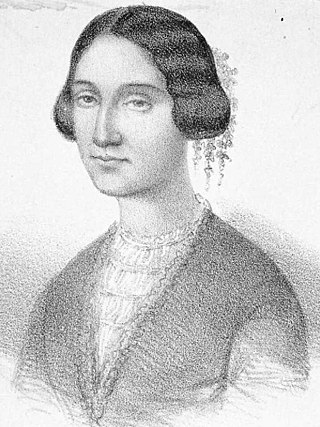
The Day of the Dead is a holiday traditionally celebrated on November 1 and 2, though other days, such as October 31 or November 6, may be included depending on the locality. The multi-day holiday involves family and friends gathering to pay respects and to remember friends and family members who have died. These celebrations can take a humorous tone, as celebrants remember amusing events and anecdotes about the departed. It is widely observed in Mexico, where it largely developed, and is also observed in other places, especially by people of Mexican heritage. The observance falls during the Christian period of Allhallowtide. Some argue that there are Indigenous Mexican or ancient Aztec influences that account for the custom, and it has become a way to remember those forebears of Mexican culture. The Day of the Dead is largely seen as having a festive characteristic.

Roberto Mario Gómez Bolaños Sr., more commonly known by his stage name Chespirito, or "Little Shakespeare", was a Mexican actor, comedian, screenwriter, humorist, director, producer, and author. He is widely regarded as one of the icons of Spanish-speaking humor and entertainment and one of the greatest comedians of all time. He is also one of the most loved and respected comedians in Latin America. He is mostly known by his acting role Chavo from the sitcom El Chavo del Ocho.

Carlos Fuentes Macías was a Mexican novelist and essayist. Among his works are The Death of Artemio Cruz (1962), Aura (1962), Terra Nostra (1975), The Old Gringo (1985) and Christopher Unborn (1987). In his obituary, The New York Times described Fuentes as "one of the most admired writers in the Spanish-speaking world" and an important influence on the Latin American Boom, the "explosion of Latin American literature in the 1960s and '70s", while The Guardian called him "Mexico's most celebrated novelist". His many literary honors include the Miguel de Cervantes Prize as well as Mexico's highest award, the Belisario Domínguez Medal of Honor (1999). He was often named as a likely candidate for the Nobel Prize in Literature, though he never won.
Calavera or its plural calaveras, may refer to:

Gustavo Adolfo Claudio Domínguez Bastida, better known as Gustavo Adolfo Bécquer, was a Spanish Romantic poet and writer, also a playwright, literary columnist, and talented in drawing. Today, some consider him one of the most important figures in Spanish literature, and is considered by some as the most read writer after Miguel de Cervantes. He adopted the alias of Bécquer as his brother Valeriano Bécquer, a painter, had done earlier. He was associated with the romanticism and post-romanticism movements and wrote while realism enjoyed success in Spain. He was moderately well-known during his life, but it was after his death that most of his works were published. His best-known works are the Rhymes and the Legends, usually published together as Rimas y leyendas. These poems and tales are essential to studying Spanish literature and common reading for high-school students in Spanish-speaking countries.

Jaime Sáenz Guzmán was a Bolivian writer, poet, novelist, journalist, essayist, illustrator, dramaturge, and professor, known best for his narrative and poetic works. His poetry, though individual to the point of being difficult to classify, bears some similarities with surrealist literature.

La Calavera Catrina had its origin as a zinc etching created by the Mexican printmaker and lithographer José Guadalupe Posada (1852–1913). The image is usually dated c. 1910-12. Its first certain publication date is 1913, when it appeared in a satiric broadside as a photo-relief etching.

A calavera, in the context of Day of the Dead, is a representation of a human skull or skeleton. The term is often applied to edible or decorative skulls made from either sugar or clay, used in the Mexican celebration of the Day of the Dead and the Roman Catholic holiday All Souls' Day. Calavera can also refer to any artistic representations of skulls or skeletons, such as those in the prints of José Guadalupe Posada, or to gifts or treats in relation to the Day of the Dead. Some widely known calaveras are created with cane sugar, decorated with items such as colored foil, icing, beads, and sometimes objects such as feathers. They range in multiple colors.
Trío Calaveras is a Mexican guitar and vocal trio, notable for its performances and recordings with the pop singer Jorge Negrete.

Pan de muerto is a type of pan dulce traditionally baked in Mexico and the Mexican diaspora during the weeks leading up to the Día de los Muertos, which is celebrated from November 1 to November 2.

Noé Jitrik was an Argentine literary critic.

Jesús Javier Hernández Silva was a Mexican professional wrestler known under the ring name Oro (Gold), a Mexican luchador enmascarado, or masked professional wrestler. Hernández died in 1993 as a direct result of a wrestling match. He was a second-generation wrestler, and several of his brothers and cousins were also wrestlers. His nephew works for the Mexican professional wrestling promotion Consejo Mundial de Lucha Libre (CMLL) as Oro Jr. as an homage to his uncle.

Oro Jr. is a Mexican luchador enmascarado, or masked professional wrestler currently working for the Mexican professional wrestling promotion Consejo Mundial de Lucha Libre (CMLL) portraying a tecnico wrestling character. Oro Jr.'s real name is not a matter of public record, as is often the case with masked wrestlers in Mexico where their private lives are kept a secret from the wrestling fans. It has been revealed that he is a third-generation wrestler, part of the Hernández family that also included his uncle Oro as well as his father Plata and uncles Oro II, Plata II, Bronce II, El Calavera Jr. and Golden.

Beatriz Villacañas is a poet, essayist and literary critic.

Cartonería or papier-mâché sculptures are a traditional handcraft in Mexico. The papier-mâché works are also called "carton piedra" for the rigidness of the final product. These sculptures today are generally made for certain yearly celebrations, especially for the Burning of Judas during Holy Week and various decorative items for Day of the Dead. However, they also include piñatas, mojigangas, masks, dolls and more made for various other occasions. There is also a significant market for collectors as well. Papier-mâché was introduced into Mexico during the colonial period, originally to make items for church. Since then, the craft has developed, especially in central Mexico. In the 20th century, the creation of works by Mexico City artisans Pedro Linares and Carmen Caballo Sevilla were recognized as works of art with patrons such as Diego Rivera. The craft has become less popular with more recent generations, but various government and cultural institutions work to preserve it.

The Mexico City Alebrije Parade is an annual event to honor Mexican handcrafts and folk art, especially a hard kind of papier-mâché called “cartonería” and the creation of fantastic figures with it called “alebrijes.” Alebrijes are chimera-like creatures credited to artisan Pedro Linares painted in bright colors. The alebrijes for the parade are larger than anything Linares created, up to four meters in height and three meters in width. The parade begins on midday on a Saturday in late October in the historic center of Mexico City. The giant creatures are accompanied by musicians, clowns, people in costume and more, giving the event a Carnival-like atmosphere. After the parade the creations are judged with prizes awarded. There are also related literary and musical compositions.
Maria Blanca de Lizaur Guerra, commonly known as Blanca de Lizaur, is a writer and researcher specialized in cultural studies, communications and literature. She was born in Mexico City, Mexico, to Spanish parents.

Dolores Cabrera y Heredia was a Spanish Romantic poet and novelist. A native of Aragon, she moved throughout Spain first following her father, then her husband. She showed an early aptitude for poetry and wrote for most of her life.
Fashion is known to be a form of expression throughout many cultures, just like the Mexican American culture. Over the decades Mexican American women's fashion evolved to celebrate beauty and fashion standards of the day. However, such evolution wasn't often well seen by society, instead it was often deemed non-normative or un-American. This style evolution started in the 1920s with American influence creating the Pelonas, the 1940s when the Pachuca culture came to be, and later evolved into the Chicanas in the 70s and the Cholas in the 90s.

Carmen Febres-Cordero de Ballén (1829–1893) was an Ecuadorian writer and poet.
















